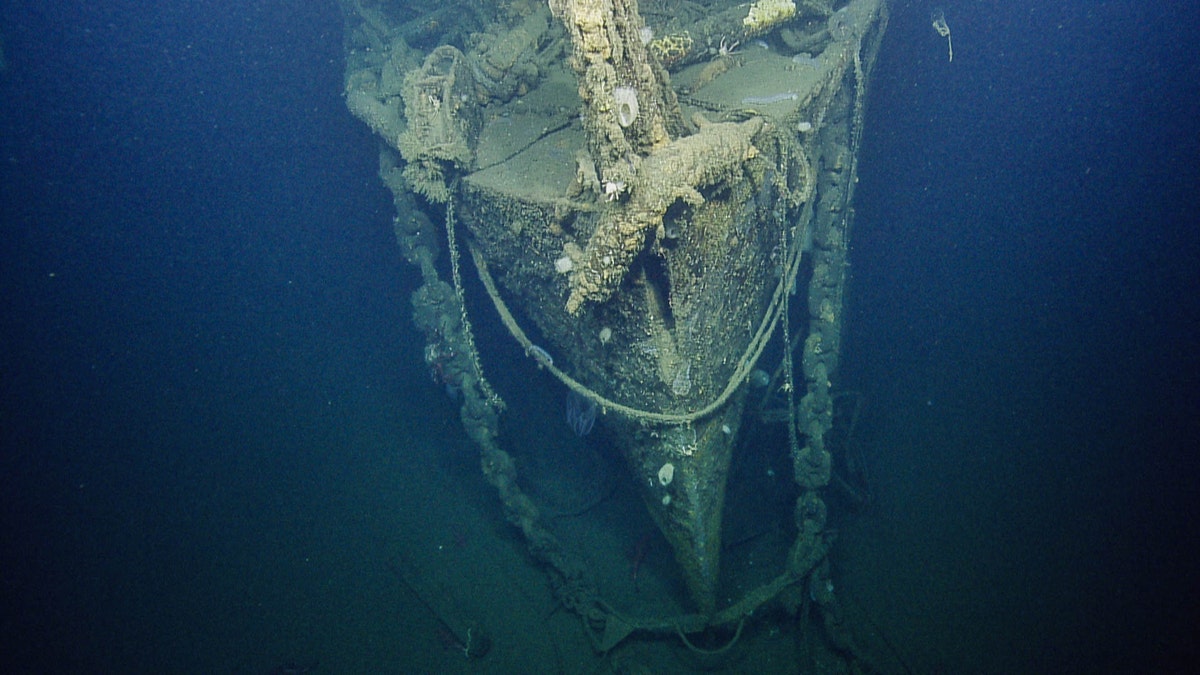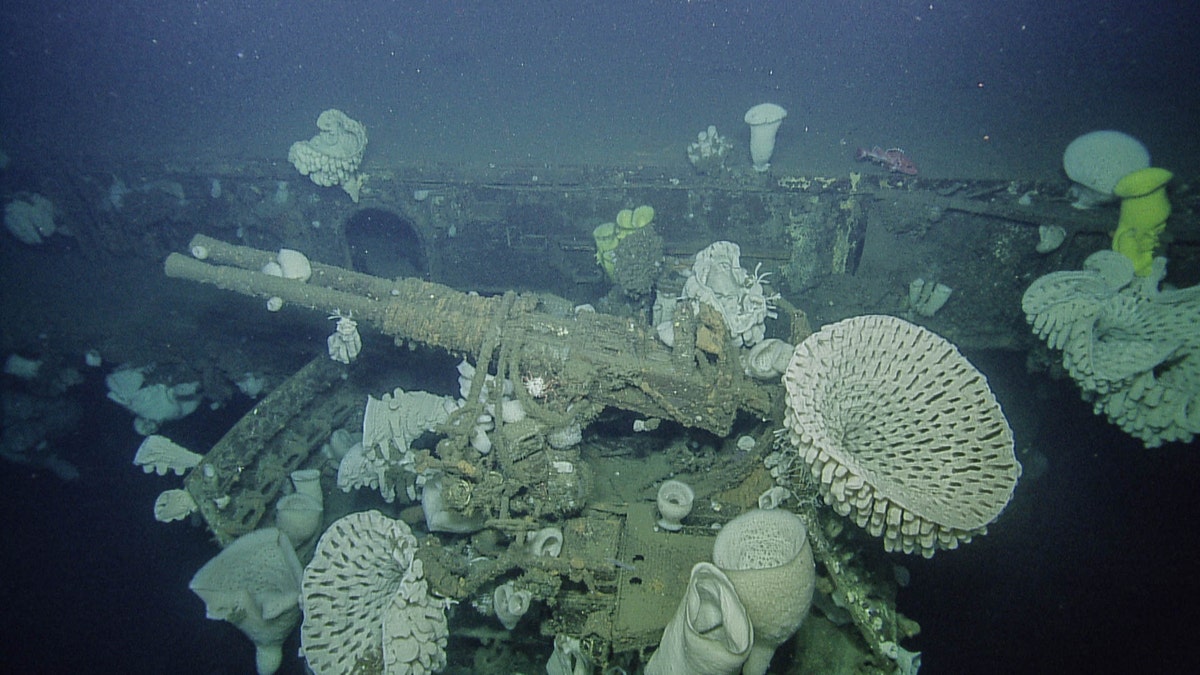
Close-up on canopy of Grumman Hellcat fighter aircraft seen in USS Independence aircraft elevator hatch (OET/Nautilus Live).
Scientists have released incredible pictures of sunken light aircraft carrier USS Independence that were taken by underwater robots exploring the wreck.
The historic ship, which served in World War II and was used in the atomic tests at Bikini Atoll in the Pacific, was intentionally sunk off California in 1951. The 622-foot-long Independence sits in 2,600 feet of water in the Greater Farallones National Maritime Sanctuary.

Bow of USS Independence (OET/Nautilus Live).
Experts on the research vessel E/V Nautilus are using two Remotely Operated Vehicles (ROVs) to study the ship, which has been described as “amazingly intact” by National Oceanic and Atmospheric Administration (NOAA) scientists. The robots’ initial dive began on Monday and they have already sent back a number of eerie images from the wreck. A Grumman Hellcat fighter aircraft, for example, can be seen in the elevator used to transport planes between the carrier’s hangar bay and its flight deck. An anti-aircraft gun is also visible and the ship’s bow can be clearly seen in the ocean’s depths.
The dive is being streamed live. James Delgado, NOAA’s head of maritime archaeology, who is on board Nautilus, has speculated that the ship may have hit the seafloor bow first, based on evidence he was seeing late Monday.

Bofors 40mm anti-aircraft weaponry surrounded by massive glass sponges (OET/Nautilus Live).
A second aircraft was identified on the ship Tuesday. The robots’ initial dive ends Tuesday and a second dive will begin on Thursday.
Related:
Independence, which was acoustically mapped by NOAA IN 2015 using autonomous underwater vehicles, is the deepest shipwreck in the Greater Farallones National Maritime Sanctuary.
Launched in 1942, the Independence saw service in the Pacific during the war and took part in the Battle of Leyte Gulf. After the war ended, Independence was one of more than 90 vessels used as a target fleet for Operation Crossroads, the U.S. atomic bomb tests at Bikini Atoll in 1946. The ship, which survived the tests, was damaged by shock waves, heat and radiation and was returned to the U.S., where it was moored at San Francisco’s Hunters Point Naval Shipyard and used for decontamination studies. The blast-damaged carrier was towed out to sea and scuttled on Jan. 26, 1951.

Lights from ROV Hercules illuminate deck of USS Independence, with view of tether running from ROV Hercules to ROV Argus (OET/Nautilus Live).
As well as conducting the first visual survey of Independence, the Nautilus cruise also aims to study the habitat of deep sea coral and sponges within the Maritime Sanctuary. Specific sites will be prioritized for future research into ocean acidification.
Researchers on board the Nautilus will explore another shipwreck, the freighter Dorothy Wintermote, this weekend. In addition to mapping the wreck, scientists will also record how fish and invertebrates have colonized the structure, as opposed to living in their natural seafloor habitat.
The Ocean Exploration Trust operates the 210-foot Nautilus.
Follow James Rogers on Twitter @jamesjrogers




















